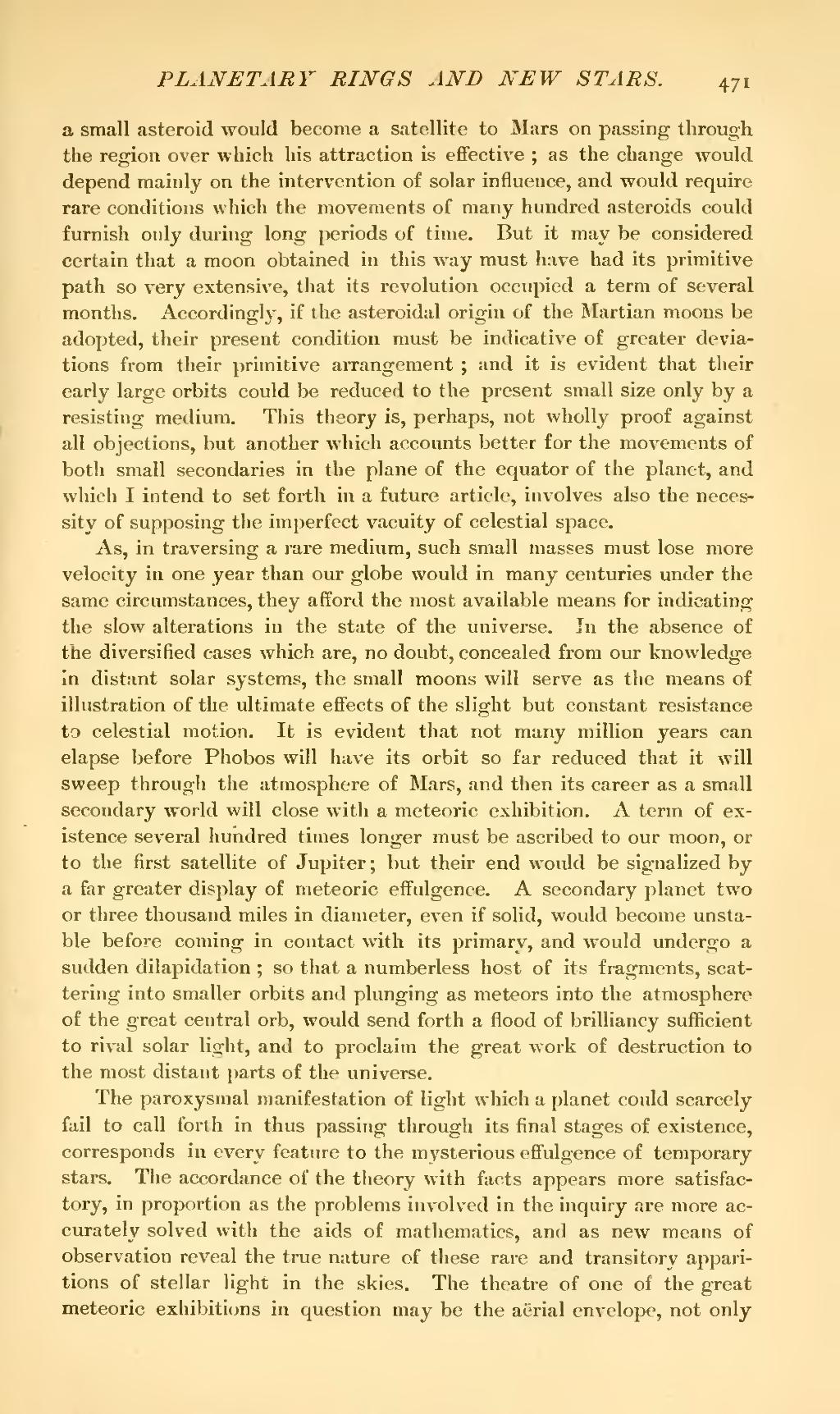a small asteroid would become a satellite to Mars on passing through the region over which his attraction is effective; as the change would depend mainly on the intervention of solar influence, and would require rare conditions which the movements of many hundred asteroids could furnish only during long periods of time. But it may be considered certain that a moon obtained in this way must have had its primitive path so very extensive, that its revolution occupied a term of several months. Accordingly, if the asteroidal origin of the Martian moons be adopted, their present condition must be indicative of greater deviations from their primitive arrangement; and it is evident that their early large orbits could be reduced to the present small size only by a resisting medium. This theory is, perhaps, not wholly proof against all objections, but another which accounts better for the movements of both small secondaries in the plane of the equator of the planet, and which I intend to set forth in a future article, involves also the necessity of supposing the imperfect vacuity of celestial space.
As, in traversing a rare medium, such small masses must lose more velocity in one year than our globe would in many centuries under the same circumstances, they afford the most available means for indicating the slow alterations in the state of the universe. In the absence of the diversified cases which are, no doubt, concealed from our knowledge in distant solar systems, the small moons will serve as the means of illustration of the ultimate effects of the slight but constant resistance to celestial motion. It is evident that not many million years can elapse before Phobos will have its orbit so far reduced that it will sweep through the atmosphere of Mars, and then its career as a small secondary world will close with a meteoric exhibition. A term of existence several hundred times longer must be ascribed to our moon, or to the first satellite of Jupiter; but their end would be signalized by a far greater display of meteoric effulgence. A secondary planet two or three thousand miles in diameter, even if solid, would become unstable before coming in contact with its primary, and would undergo a sudden dilapidation; so that a numberless host of its fragments, scattering into smaller orbits and plunging as meteors into the atmosphere of the great central orb, would send forth a flood of brilliancy sufficient to rival solar light, and to proclaim the great work of destruction to the most distant parts of the universe.
The paroxysmal manifestation of light which a planet could scarcely fail to call forth in thus passing through its final stages of existence, corresponds in every feature to the mysterious effulgence of temporary stars. The accordance of the theory with facts appears more satisfactory, in proportion as the problems involved in the inquiry are more accurately solved with the aids of mathematics, and as new means of observation reveal the true nature of these rare and transitory apparitions of stellar light in the skies. The theatre of one of the great meteoric exhibitions in question may be the aerial envelope, not only
